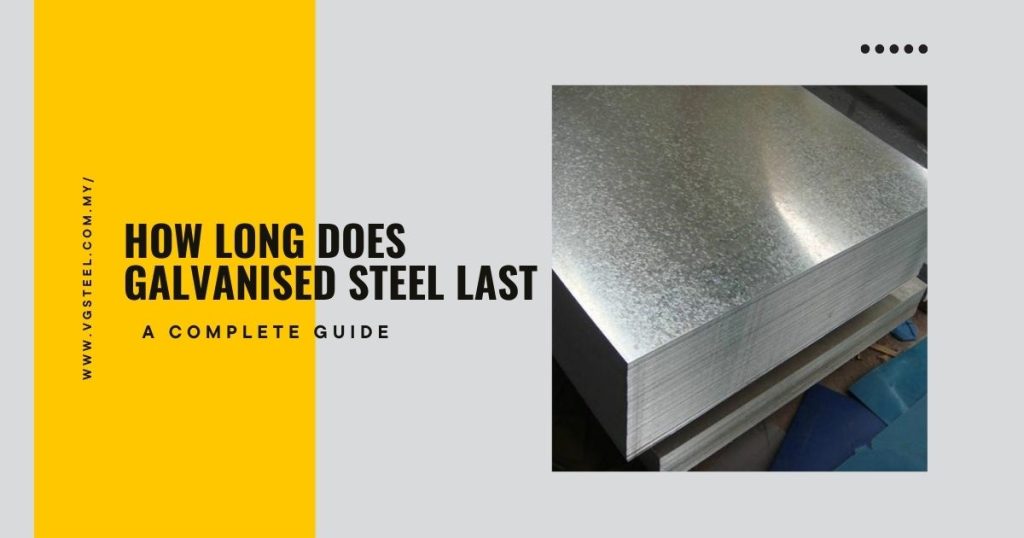When it comes to construction materials that stand the test of time, galvanised steel is among the most reliable. Used widely in various industries—from infrastructure and agriculture to transportation and residential building—this metal owes its strength and durability to a special protective coating. But the most frequent question asked is: How long does galvanised steel last? Let’s look at the answer, specifically through the eyes of a common use—standard galvanised steel guardrail systems.
Understanding Galvanisation
Galvanised steel is basically normal steel that has been covered in a zinc coating. Galvanisation is a process that aims to prevent the steel from corrosion and rust. Zinc coating prevents the steel from coming into contact with elements like moisture, oxygen, and pollutants all of which cause corrosion.
Average Life of Galvanised Steel
- The life expectancy of galvanised steel could be contingent on environmental conditions, zinc coating thickness, and the use of steel. However in regular conditions:
- In the rural atmosphere, with minimum pollution and moisture content, galvanised steel would last 70 or over 100 years with no severe corrosion.
- In urban and industrial areas, with greater exposure to pollutants, it may be effective for 40 to 70 years.
- In coastal areas the atmospheric air-borne salt speeds up the corrosion, and the life of galvanised steel may thus reduce to 20-50 years.
These statistics make galvanised steel a suitable option for long term use, especially in making of structures such as of infrastructure and buildings.
The Life of Standard Galvanised Steel Guardrail
A standard galvanised steel guardrail can be seen on highways, bridges, car parks, and commercial estates. Guardrails are safety features, meant to survive the impact of a vehicle while withstanding tough weather conditions outdoors. Thanks to their zinc coating, they resist rust even in high-humidity or variable climates.
In practice, standard galvanised steel guardrails typically last 30 to 50 years without needing major maintenance. In a few instances, particularly in arid inland environments, they have been found to outlast this with little deterioration.
One of the major reasons for their longevity is hot dip galvanizing—a process whereby the steel is immersed in molten zinc. This produces a thicker, more durable coating than other galvanising processes. For applications like guardrails, this ensures protection against everything from rain and UV rays to vehicle emissions and road salt.
Factors That Influence Longevity
Several variables affect how long galvanised steel, including guardrails, will last:
- Environmental Conditions: Humid or coastal climates can reduce lifespan due to increased exposure to moisture and salt.
- Coating Thickness: The thicker the zinc coating, the more effective the protection.
- Physical Damage: Damage to the physical structure like scratch, dents or others can permit the base steel to corrode.
- Installation Quality: Installation done in the right way guarantees the integrity and effectiveness of the protective coating.
- Maintenance: Despite the low maintenance factor associated with galvanised steel, routine inspection and repair could help to increase its lifespan.
Why Galvanised Steel Guardrails?
Durability is one of many benefits of standard galvanised steel guardrail systems. The other benefits include:
- Economy: The long life means that repeated replacements will occur less frequently.
- Low maintenance needs reduce work and materials.
- Safety: Their integrity is maintained for decades to ensure ongoing protection.
Galvanised steel guardrails will be a wise forward-looking investment for contractors, engineers, and municipalities.
Reliable Experts in Steel Solutions
VG Steel Industries specializes in manufacture and supply of high quality galvanized steel guardrail systems. Sticking to our safety, durability, and precision commitment, we provide longer protection of roads and infrastructure. Join us today for a permanent steel solution. Contact us now!

